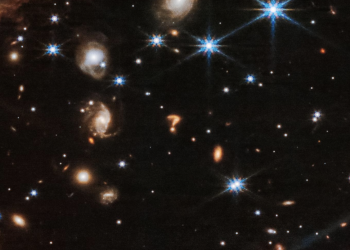Imagine a future where humanity traverses the cosmos, visiting distant galaxies in the blink of an eye. Inspired by films like Interstellar, which features a wormhole near Saturn as a shortcut to habitable worlds, and series like Stargate, where travelers jump between planets, our fascination with interstellar travel is deeply rooted in science fiction. Yet, could these fantastical concepts have a basis in reality?
In theory, wormholes serve as cosmic bridges that could connect vast distances—distances that would otherwise take eons to cross, even at light speed. Picture the universe filled with these portals, akin to cosmic elevators, poised to whisk us away to distant realms. Scientists speculate that if we could tap into the higher dimensions where wormholes might exist, we could revolutionize space travel.
Currently, wormholes are speculative constructs, existing primarily in mathematical theories rather than in observable reality. No telescope or scientific instrument has confirmed their existence, yet the underlying equations suggest they could be as tangible as black holes, which once seemed purely theoretical but are now well-documented astronomical phenomena.
Bridging Theory and Reality
The groundwork for our understanding of wormholes was laid in 1935 by Albert Einstein and Nathan Rosen, who introduced the concept of the Einstein-Rosen bridge. This idea proposed a shortcut through spacetime, aligning with the principles of General Relativity. It wasn’t until 1957 that John Archibald Wheeler introduced the term “wormhole,” further exploring the intriguing fabric of the universe.
General Relativity posits that space and time are intertwined, forming a dynamic fabric shaped by mass. This curvature creates the gravitational pull we experience. To visualize a wormhole, consider a long piece of fabric with a bug crawling from one end to the other. If you fold the fabric, bringing the ends close together, the bug can traverse the distance almost instantaneously.
Traveling through a wormhole offers more than just a shortcut through space; it also presents the possibility of altering time. Depending on the structure of the wormhole, travelers might experience time differently—speeding up, slowing down, or even looping back. This paradox raises compelling questions: what would it mean to arrive at a point in time before your departure?
To explore these possibilities, scientists are investigating quantum physics. Some theories suggest that microscopic wormholes might already exist, briefly popping into and out of existence. If we could harness and enlarge one of these fleeting constructs, we could create a stable passage for interstellar travel.
The Challenges of Creation
Envision an advanced civilization that successfully constructs a wormhole. Kip Thorne, a theoretical astrophysicist, asserts that while this may sound improbable, it remains a more feasible option than a naturally occurring wormhole materializing spontaneously. However, navigating such a phenomenon presents considerable challenges.
As a spacecraft approaches a wormhole, gravitational forces intensify. Even a specially designed craft could struggle against the turbulent forces at play. Inside, passengers might witness mesmerizing distortions and swirling lights due to gravitational lensing—the bending of light caused by intense gravity.
The Stability Dilemma
Another critical concern is the stability of the wormhole itself. The energy required to keep a wormhole open is immense, and naturally occurring ones may collapse almost immediately after forming. In theory, a civilization could introduce exotic matter into the wormhole, helping maintain its structure. Thorne and his colleagues have explored this possibility in their research, considering how such structures might enable time travel.
Understanding the exit point of a wormhole adds another layer of complexity. If one end is accelerated to near-light speeds, time will pass differently at each end. A traveler entering through the slower-moving end could potentially arrive in the past, depending on the relative speed of the two ends.
Thorne posits that quantum mechanics might reveal pathways to time travel via wormholes, though practical experimentation remains elusive. Yet he maintains a sense of optimism about the future, suggesting that theoretical explorations could deepen our understanding of the universe’s fundamental laws.
As we contemplate the vastness of space, the potential for interstellar travel raises profound questions about our understanding of reality and our place in the cosmos. While wormholes currently reside in the domain of theory, the convergence of science and imagination may one day unlock the secrets of the universe. The journey from abstract concept to tangible reality could transform humanity’s relationship with the stars, heralding a new era of exploration and discovery.











